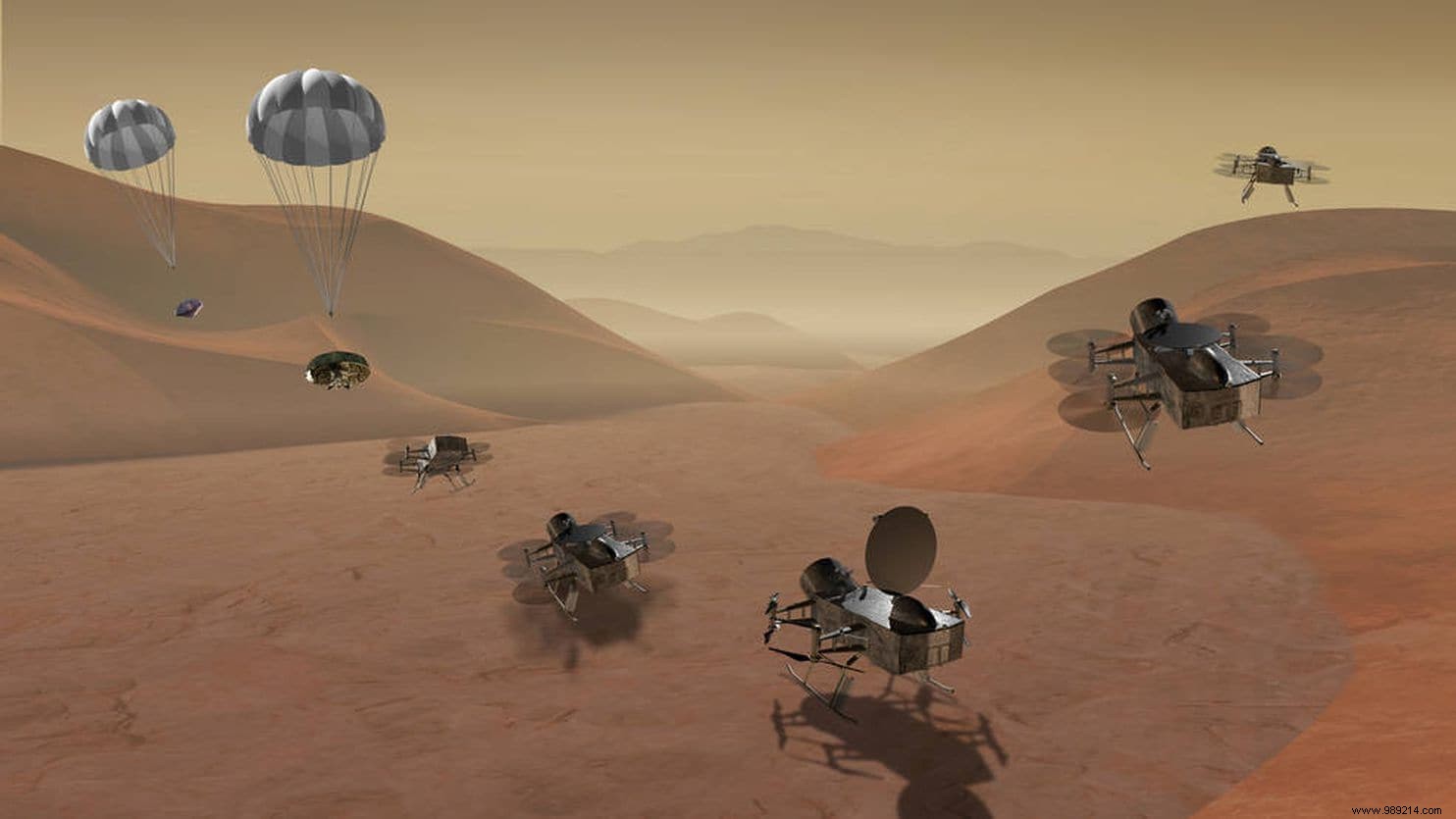Researchers are currently working on a project to explore the lakes and seas of liquid hydrocarbons on Saturn's moon Titan. If approved by NASA, such a mission could be launched in the 2030s.
At 5150 kilometers wide, Titan is the second largest moon in the Solar System, just behind Ganymede. Apart from the Earth, it is the only body in the Solar System that has stable liquids on the surface. On the other hand, these seas, lakes and rivers are not made up of water, but of methane and ethane .
Titan is also coated in a thick atmosphere likely harboring complex chemistry involving organic molecules. As a result, many astrobiologists believe this moon could harbor life. This one, if indeed it exists, would on the other hand be very different from that evolving on Earth.
It's also possible that, like the moons Enceladus and Europa, Titan hosts an ocean of salty water buried deep beneath its crust. By letting ourselves wander a little, we could then imagine two completely different and separate ecosystems , with an "exotic" world on the surface and a realm of more "familiar" organisms dependent on water to survive. Of course, this is all just theory. The ideal would therefore be to go and see directly on site.
We have already "set foot" on Titan as part of the Cassini mission, which studied Saturn and its moons from 2004 to 2017. In January 2005, ESA indeed succeeded in landing its Huygens lander on the surface after taking measurements of its atmosphere during its descent.
We already know that NASA will also be returning as part of its Dragonfly mission. The idea:to release a small quadcopter capable of "jumping" through the moon's atmosphere. Since it is four times denser than Earth's and has seven times weaker gravity, each "jump" could take it about ten miles .
Several instruments will then be responsible for analyzing the various organic elements present in the atmosphere. On the calendar side, the mission should normally be launched in 2026 to arrive at its destination in 2034.

After the quadcopter, a nuclear-powered submarine could be the next step in the exploration of Titan. It is only a project for the moment, but NASA has been thinking about it for several years. As part of the Innovative Advanced Concepts (NIAC) program, funded by the US agency, a working group is currently developing an idea for a mission.
Steven Oleson, the main player in this project, assures us that it is doable. According to him, Titan offers only 14% of the gravitational pull of our planet . This means that a submarine would not experience as much pressure as on Earth. This type of craft could also pass through liquid hydrocarbons quite easily while communicating back to Earth by radio link even while submerged.
To evolve in this extraterrestrial environment and support direct communication to Earth, this submarine should be quite large:about six meters long for a weight (about Earth) of at least 1500 kilos . If, on the other hand, the communications were to be relayed by an orbiter companion, this submarine could integrate the same scientific instrumentation in a body only two meters long, for a weight of approximately 500 kg .
Among the scientific equipment, the researcher mentions instruments capable of analyzing the chemistry of hydrocarbons, a surface imager, a depth sounder and a weather station. Additional instruments could also analyze seafloor samples.

The two preferred exploration targets are currently Kraken Mare and Ligeia Mare , located at the northern latitudes of the moon. These two bodies are huge. Kraken Mare covers approximately 400,000 square kilometers and dives to at least 35 meters deep. And Ligeia Mare has an area of 130,000 square km and a maximum depth of 170 meters.
Finally, on the calendar side, the working group expects an arrival in 2040 (Nordic spring) or 2045 (summer). Assuming that a trip to Saturn takes about seven years, such a mission should therefore be launched in the 2030s.